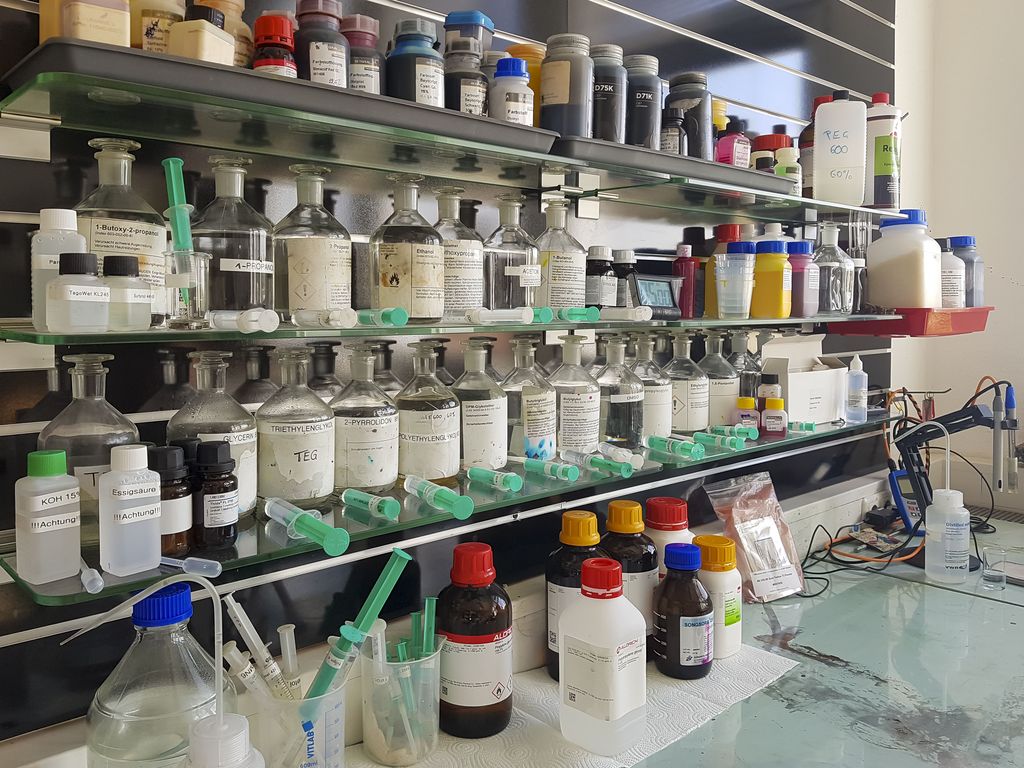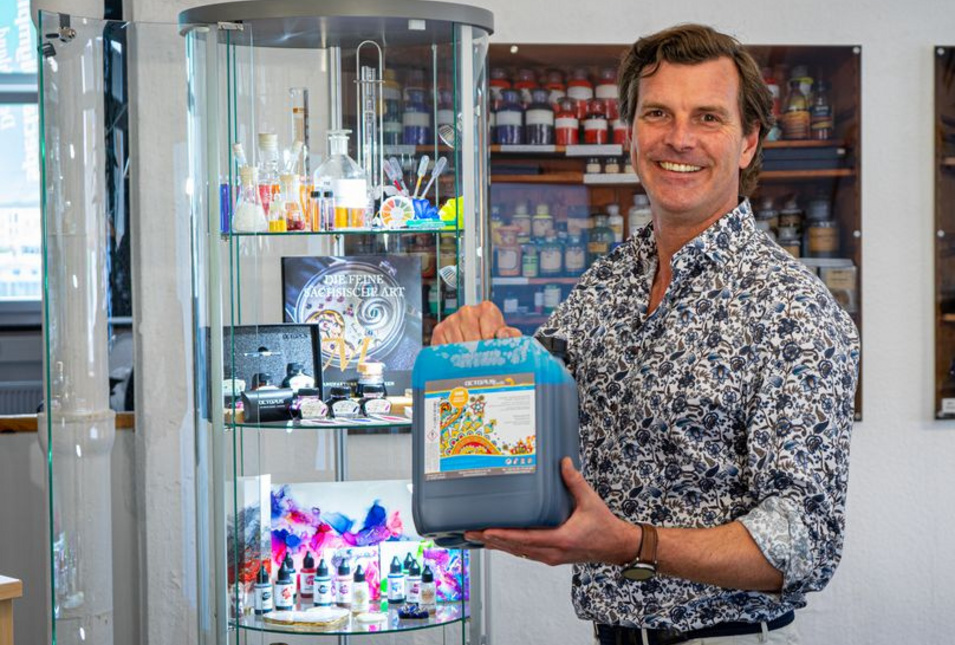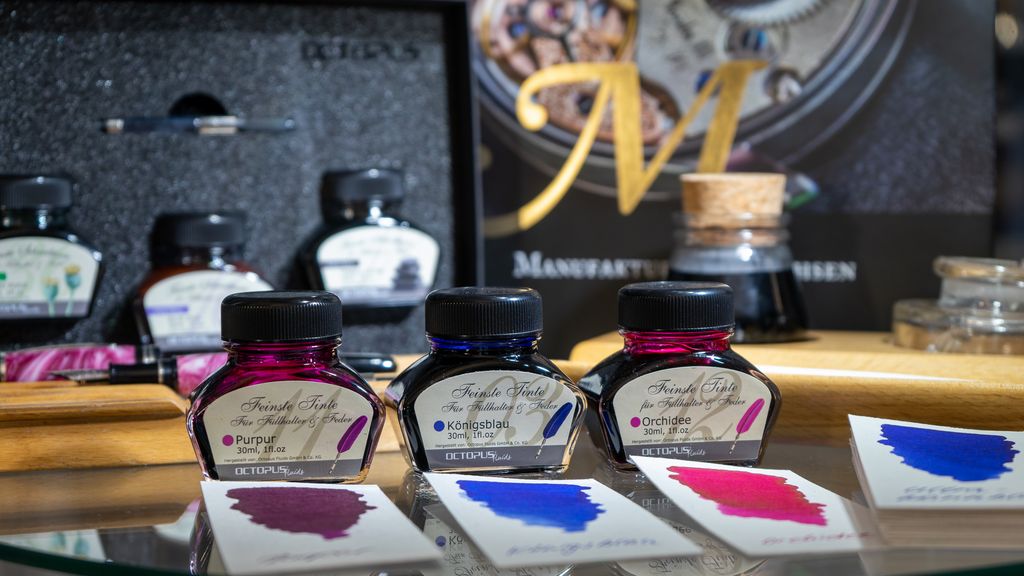
Producing the finest inks for nearly 200 years
Mr. Lange, you stepped up in 2011 with the Octopus brand, taking on the heritage passed down by the longstanding East German ink brand Barock when it went bankrupt. How has your business developed since then?
We’re doing great. Our revenue is growing steadily. Right now, the figure stands at about 4.5 million euros a year. Octopus Concept GmbH is our sales company, while Octopus Fluids GmbH & Co. KG is responsible for developing and producing our inks. All in all, we have 25 employees now.
What did you inherit from the former East German brand Barock?
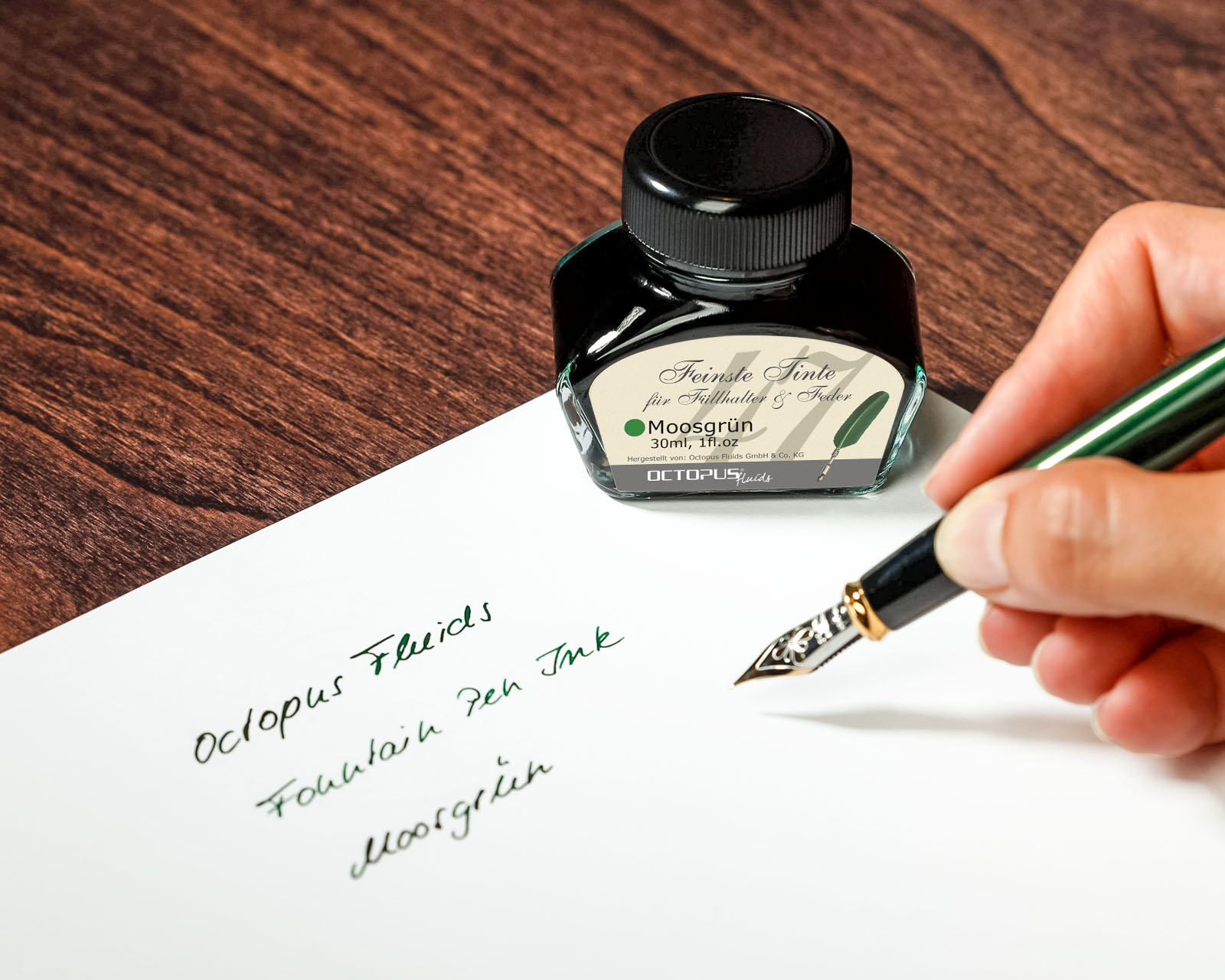
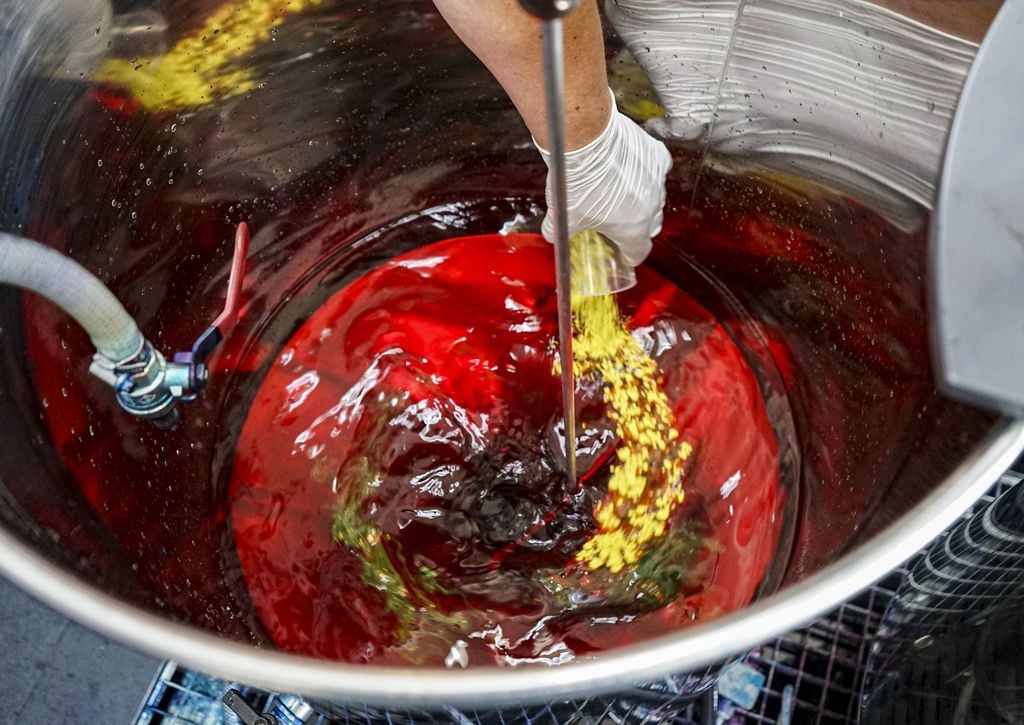
What are your most popular or best-selling colors?
The recipes for Coca-Cola and Haribo fruit gummies are among the world’s best-kept secrets. What about your ink? Will you tell us how it's formulated?
